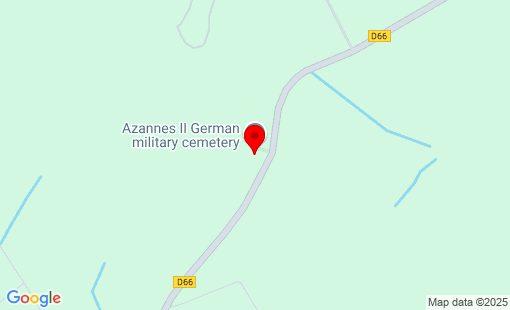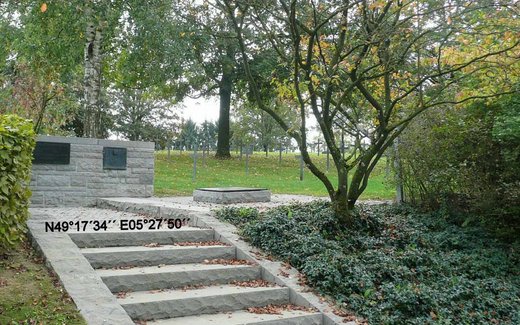France
Azannes I
Total Occupation: 817 fatalities
Total Occupation: 817 fatalities
Open all year round
Photographs: Fritz Braun Département Meuse 817 German war dead First World War The German military cemetery Azannes I was established by their own troops at the beginning of the Battle of Verdun at the end of February 1916, when a burial ground was needed for the first casualties and those who died of wounds. The majority of those buried here died in the first three months of the battle, including many who had led the charge to Fort Douaumont. They belonged to six divisions, which suffered particularly heavy losses in attack and defense in this terrain. The Royal Bavarian Armored Battalion X erected its own memorial to its fallen in the cemetery. After the end of the war, the French military authorities reburied a further 28 fallen soldiers, whose graves were in the municipality of Chaumont, in Azannes I. The dead whose field graves were scattered around the commune of Azannes after the end of the war and who had been found during recultivation work on the former battlefield after 1930 were also buried in Azannes in the two military cemeteries. Those buried here belonged to units whose home garrisons were in Bavaria, Hesse, Saxony, Brandenburg, East Prussia, Mecklenburg, Poznan and Schleswig-Holstein. Repair work between the wars Initial work to improve the condition of the cemetery was carried out by the Volksbund Deutsche Kriegsgräberfürsorge e.V. (German War Graves Commission) on the basis of an agreement reached with the French military authorities in 1926. Extensive tree planting began in the fall of 1930. This was followed by the restoration of the entrance and the greening of the grave area. A high oak cross was erected as a central marker. However, the problem of permanently marking the graves remained unresolved due to a lack of foreign currency and the outbreak of the Second World War in 1939. Final design Following the conclusion of the Franco-German War Graves Agreement on July 19, 1966, the Volksbund Deutsche Kriegsgräberfürsorge e.V. - with financial support from the German government - was able to carry out the final design of the German military cemeteries of the First World War in France. Prior to this, young volunteers from the Volksbund had already begun extensive preparatory gardening work. In 1976, the previous temporary wooden grave markers were replaced by metal crosses with the names and dates of those buried here cast into them. Previously, young helpers had moved the 35 kg concrete foundations, which were transported by the German army, to the graves. All 817 fallen rest in individual graves. Three fates remain unknown. For religious reasons, the three graves of the fallen of the Jewish faith were marked with a natural stone grave stele instead of a cross, with the following Hebrew inscription: 1 (above) "Here rests buried .... ." 2. (below) "May his soul be bound into the circle of the living." This was followed by a general landscaping overhaul with the replanting of trees, shrubs and hedges, the renewal of the greening of the graves and the design of the entrance area. The wooden high cross was replaced by one made of forged steel. The troop memorial was carefully restored.



